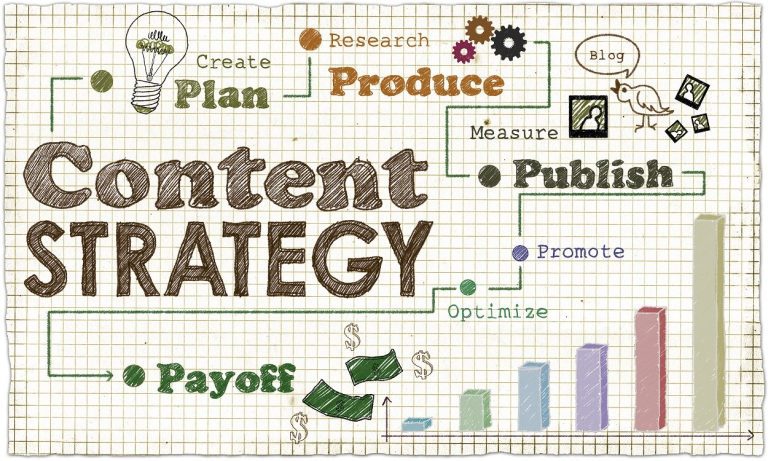15 Critical Content Marketing Metrics
Content marketing is perhaps the fast-growing form of digital marketing, and for good reason. This avenue allows businesses to produce valuable and relatable content for their audiences, helping to encourage engagement, prove themselves as authorities in their industries, and bring in new leads without paying for advertisements. But you can’t be sure your content marketing efforts are working without tracking them. With that in mind, here are some top content marketing metrics you should consider tracking.
1. Website Traffic
No matter what kind of marketing you’re doing, you should be tracking your overall website traffic. Online shopping is only getting more popular by the day, so the number of visitors coming to your website each day is a crucial metric. As you’re looking at website traffic, consider what posts or types of content are bringing people to your website. You might think about creating more of the most popular types of content.
2. Leads
Of course, the number of leads you get is one of the most important content marketing metrics for businesses in all fields. Content marketing is especially effective here; studies have shown that it generates up to three times as many leads as paid searches do. As long as you’re experiencing an increase in your lead numbers each month, you’re on the right track.
(image from https://databox.com/fundamental-content-marketing-kpis)
3. Time on Page
It’s not enough to track the number of web users you’re getting; you should also see how long they’re spending on each page. If users are spending a significant amount of time on a given page, they’re likely getting quite a bit of value from it. Tracking this metric can help you see how relevant and engaging your content is.
4. Bounce Rate
Bounce rates indicate how many users come to one page of your website and then leave without visiting another page. High bounce rates show that your readers aren’t sticking around very long. This might have to do with your content or the formatting of the website itself. Perhaps the page is slow to load, not user-friendly, or hard to navigate.
(image from https://cxl.com/guides/bounce-rate/seo-impact/)
5. Pages Per Session
To go along with bounce rate, you can also track users’ pages per session. You can track both metrics or choose one over the other. This metric lets you see how many pages of your website a user is visiting in a single session. Your goal rate will be entirely up to you, but in general, the more pages people are visiting, the better.
6. Comments
Perhaps the most obvious sign of user engagement is comments. Users who leave a comment have had to genuinely interact with a piece in a way that requires much more effort than simply liking or sharing. A thriving comments section can prove the original piece’s engagement and even add another layer to the discussion you’ve started.
While social shares don’t take as much effort as comments, they are still worth tracking. Social shares help to spread the word about your business and allow you to make the most of today’s word-of-mouth marketing. When a user shares your content, it shows that they’ve truly resonated with it and want others to experience that feeling, too.
8. Conversion Rates
Converting the casual user into a paying customer is the ultimate goal of any content marketing effort, which is why tracking conversion rates is so important. But you don’t necessarily have to limit your tracking to sales. You could track the number of users opting in to your email list or following your business on social media. High conversion rates prove that your marketing efforts are aimed toward the appropriate audience.
9. Click-Through Rates
Click-through rate (CTR) is another of the more interesting content marketing metrics to consider, especially if you create content with links to make purchases on your website. Internal links can be a great way to draw more traffic to your sales pages without much extra effort, and tracking your CTR can help you see which pieces are most successful in this area.
10. Keyword Rankings
You’re likely already integrating SEO keywords into your content, so you should be tracking their performance as well. When your content ranks highly for a relevant keyword, you know your pieces are showing up toward the top of search engine results, giving you an edge over the competition. If your rankings are low, consider choosing more specific keywords in your future content.
11. Scroll Depth
Scroll depth is one of the most underrated content marketing metrics, but it’s an incredibly valuable one. If users are only scrolling to 15% of the page, they’re not reading all of your content. They may not find it engaging or useful, and you can begin to look at that content more closely. Additionally, if most users are scrolling 50% of a page, for instance, you can ensure you have a call to action before that point.
12. Backlinks
Backlinks can be an amazing indicator of your content’s overall performance. Not only do they drive referral traffic, but they also speak to search engines and let them know that your content is trustworthy. A high number of backlinks indicates that your content is of top quality and is appreciated by others in the industry.
13. Return Customers
New customers are incredible for business, but return customers can be even more important. Returning customers show that they like your brand and its products enough to keep coming back for more. To track returning customers, you might consider setting tracking codes from the “thank you” page that comes after a purchase.
14. Number of Subscribers
Tracking your number of subscribers, particularly on social media, is a great way to track the reach of your brand. As you gain more followers, the word about your business is spreading. This is perhaps one of the easiest content marketing metrics to track, and when utilized correctly, it can be incredibly effective in your overall marketing efforts.
15. Customer Acquisition Costs (CAC)
Some experts consider customer acquisition costs (CAC) to be the most important of all content marketing metrics. This metric helps you understand how much it’s costing your business to get a new customer. If you’re spending more to get a customer than the amount they’re spending on your products, then your marketing campaign isn’t worth the effort and is actually costing you money.
Content Marketing with WriterArmy
If you’re new to content marketing and aren’t sure where to start, WriterArmy is here. Our team has over a decade of experience creating content and helping businesses of all sizes create and perfect their content marketing strategies. For more information about any of our content services, contact WriterArmy today!








